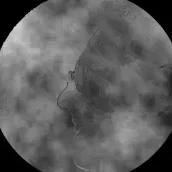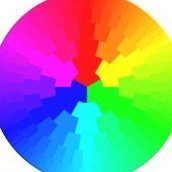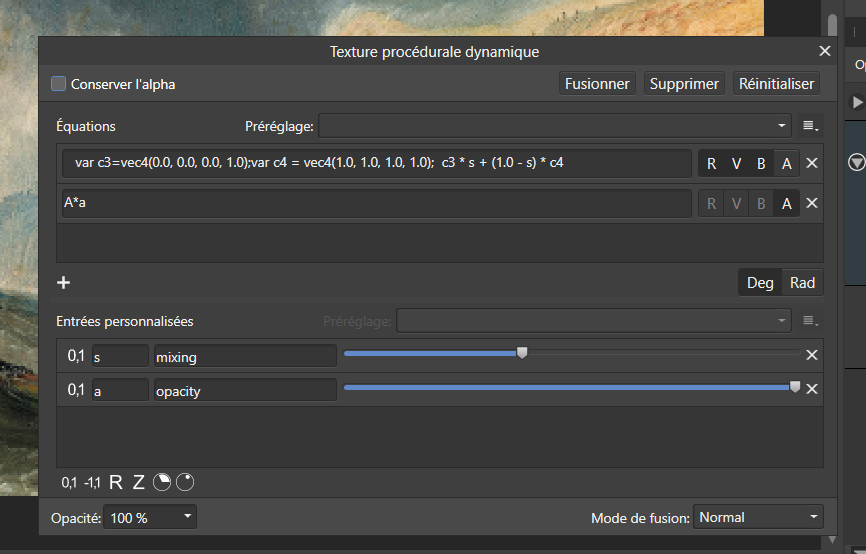
Max P
Members-
Posts
113 -
Joined
-
Last visited
Recent Profile Visitors
3,075 profile views
-
 Max P reacted to a post in a topic:
Affinity Photo Tutorial - perfect night shots with exposure blending
Max P reacted to a post in a topic:
Affinity Photo Tutorial - perfect night shots with exposure blending
-
I think it's unhealthy to include a DAM in affinity! Past experience with LR6 and difficulties to evolve., update in time Seriff, a small company, already has to deal with its multi-OS suite. As far as I'm concerned, this company should concentrate on optimising the code for native functions and their updates. I don't want any additional 'glue' NO DAM There's enough of that, as a standalone application, and some nice ones at that.
-
More easy for me 16 bit for the precision 1 Make a provisional B&W version 2 Use the pen tool to select the area on the forehead roughly to start and use a dynamic Gaussian blur for a smooth transition edge 3 Use the dropper to select the right grey value and fill this area 4 Delete the B&W version 5 Now switch the curve layer to divide mode (around 15 40% opacity ) Adapt the gray component if necessary with the color wheel and perhaps the color with the peripheral circle a little green ?.. 6 With the node retouch the limit on the area. 7 Review all dynamic parameters to retouch another area in this way, you need to make a copy of the initial layer and repeat this process
-
 Max P reacted to a post in a topic:
Alpha Channel Packing / editing Alpha Channel as regular color channel
Max P reacted to a post in a topic:
Alpha Channel Packing / editing Alpha Channel as regular color channel
-
 Max P reacted to a post in a topic:
Tonal Correction Tools Explained in Affinity Photo/Develop Personas
Max P reacted to a post in a topic:
Tonal Correction Tools Explained in Affinity Photo/Develop Personas
-
 Max P reacted to a post in a topic:
500 Gradient Background
Max P reacted to a post in a topic:
500 Gradient Background
-
 Max P reacted to a post in a topic:
Overtones Harmonic Color Grading [free macros]
Max P reacted to a post in a topic:
Overtones Harmonic Color Grading [free macros]
-
 Max P reacted to a post in a topic:
Affinity Photo Manipulation - Red Planet
Max P reacted to a post in a topic:
Affinity Photo Manipulation - Red Planet
-
Hi, sometimes there is objectively a bug I have the same problem since a while after an update, the plugin list disappeared, and impossible to reconfigure it? I just retried this morning with gmic all the proposed solutions (like defining another folder, possibly on another disk with the right access permissions) It's repetitive if you look at the history of the different forums, in some cases certain configurations sometimes not all the time. Nothing! On APhoto V1
-
 Max P reacted to a post in a topic:
Official Affinity Photo (V2) Tutorials
Max P reacted to a post in a topic:
Official Affinity Photo (V2) Tutorials
-
 Max P reacted to a post in a topic:
Porsche 917K Daytona Winner (AD)
Max P reacted to a post in a topic:
Porsche 917K Daytona Winner (AD)
-
 Max P reacted to a post in a topic:
Artwork created using the new Affinity Photo 'Nature' brushes that I created
Max P reacted to a post in a topic:
Artwork created using the new Affinity Photo 'Nature' brushes that I created
-
How do I use the white balance picker?
Max P replied to KipV's topic in [ARCHIVE] Photo beta on macOS threads
It's to old solution A photo have now the divide mode. use it Try this Fill layer whith dominant color, use the color picker mode divide play with opacity Okay , this solution uses the entire surface of the layer It may be wise to select an specific area, use the Pen tools or an ellipse (no need for great precision) to select the area where you want to correct the color castand here fill with the dominant color. (adapt with gaussian blur fx and with node ) for the gray /white component fill with a neutral grey gray divide mode ( color mode adjusting saturation ) The advantage of a vectorial object is that you can always adjust the color in situ. adjust witn opacity at each step -
Hi smadell I just tested your macros good job, cartoon effect but not only In the latest version of windows on the welcome image, we have a splash popup window, to give the password an interesting blurred version with color cast mapping. I was wondering how to generate this, attempt to use in color correction, just an instinctive reaction Your macros are perfectly usable and adjustable for this: On a landscape image, in hard light* mode and in neutral position 50% I obtained results which seem interesting in the spirit of Hwb. *or other light modes Yesss! Thank you
-
Suggestion problème de fusion
Max P replied to Piou's topic in [ARCHIVE] Photo beta on Windows threads
Bonjour Piou Oui logique on assemble X calques en un seul calque Si tu veux tout de même , garder l'opportunité de re intervenir juste avant cette fusion tu dupliques en un groupe et ce nouveau groupe que tu fusionnes en faisant clique droit tramer Yes, it is logical to merge X layers into a single layer If you want to keep the opportunity to intervene just before this merging duplicate in a group and this new group, you merge by right clicking on it rasterize -
 NotMyFault reacted to a post in a topic:
Strange Lab color - suppose a bug in color rendering
NotMyFault reacted to a post in a topic:
Strange Lab color - suppose a bug in color rendering
-
Strange Lab color - suppose a bug in color rendering
Max P replied to smg's topic in V1 Bugs found on macOS
I just tried with Krita, l*a*b* (32 bit) L100 seems to be a special case where the terminals a* and b* on the left side have the same colour. I just learned something, this day Pauls NotMyFault you were right, sorry for my previous post Merry Christmas to you -
Strange Lab color - suppose a bug in color rendering
Max P replied to smg's topic in V1 Bugs found on macOS
Yes yes you are right, it's a bug some day ago, in Affinity Photo, I saw the same incoherence, very surprised. From memory it seems to me that it was correct, some time ago -
Layer opacity vs. fill
Max P replied to mso1977's topic in Feedback for Affinity Photo V1 on Desktop
Painting Wash Lavis is the equivalent key word water color wash I seem to have misunderstood your previous comment for this one Understand , but not convinced me Well I see that the tone rises also I will leave this thread thanks to all because I have made a lot of progress thanks to this thread -
Layer opacity vs. fill
Max P replied to mso1977's topic in Feedback for Affinity Photo V1 on Desktop
Okay I understand Lavis one method for this dilute a color before using it use only one color that will be diluted to obtain different intensities of color We have a differential of appreciation in the term FILL, and an unsaid For me Fill Layers when Need to add a layer that is completely filled with a solid color, gradient or pattern Go on youtube play with opacity colour overlay I retained also that we could use semi-transparent colors on AFFINITY SWATCHES pantone Xxx easy Last video Colour overlay AFFINITY solid color -
Layer opacity vs. fill
Max P replied to mso1977's topic in Feedback for Affinity Photo V1 on Desktop
Smee Again i see your post , thank , if i understand you correctly For the Fill layer ( or Curve or vectoriel shape ) it is possible to use the Color> Grayscale slider more precise than color wheel Or better for me Lab L 50 A 0 B0, and move L plus or minus HSL also To color layer use these sliders with the appropriate mode, eventually add a mask to circumscribe the effect on the right area No problem for a gradient I don't know if it does the job, I have no PS -
 loukash reacted to a post in a topic:
Layer opacity vs. fill
loukash reacted to a post in a topic:
Layer opacity vs. fill
-
 NotMyFault reacted to a post in a topic:
Layer opacity vs. fill
NotMyFault reacted to a post in a topic:
Layer opacity vs. fill
-
Layer opacity vs. fill
Max P replied to mso1977's topic in Feedback for Affinity Photo V1 on Desktop
Yees We can use procedural texture for this using vec4() for vector with 4 parameters here vec4(Rx,Gx,Bx, Opacity) Rx,Gx,Bx, Opacity, are define in [0.0, 1.0 ] For me no sens using 8 bit (Fill Layer is 8 bit!) First Step we define vec4 c1 = vec4(0.0, 0.0, 0.0, 1.0); //Black vec4 c2 = vec4(1.0, 0.0, 0.0, 1.0); //Red vec4 c3 = vec4(1.0, 1.0, 0.0, 1.0); //Yellow vec4 c4 = vec4(0.0, 0.0, 1.0, 1.0); //Blue vec4 c6 = vec4(1.0, 1.0, 1.0, 1.0); //white we want an interpolation slider between White and Black var c1=vec4(0.0, 0.0, 0.0, 1.0);var c6 = vec4(1.0, 1.0, 1.0, 1.0); c6 * s + (1.0 - s) * c1 var for variable c4 * s + (1.0 - s) * c1 // classic use for mixing or use lerp() And Yess, Pixel layer can gives same result, and with 16 bit!, 32 bit is possible but my pc is limited 16 giga Ram , I5 and and I am not convinced that it is better Rename each layer very important here, Otherwise photo can get lost in cyber space Turner-Shipreck.afphoto => between Black and Blue var c1=vec4(0.0, 0.0, 0.0, 1.0); var c4 = vec4(0.0, 0.0, 1.0, 1.0); c4 * s + (1.0 - s) * c1 between Black and Red var c1=vec4(0.0, 0.0, 0.0, 1.0);var c2 = vec4(1.0, 0.0, 0.0, 1.0); c2 * s + (1.0 - s) * c1 Info and explain https://thebookofshaders.com/06/ https://www.codeproject.com/Articles/492355/Domain-Coloring-Method-on-GPU https://fr.mathworks.com/matlabcentral/fileexchange/25773-domain-coloring -
 Alej reacted to a post in a topic:
How to apply Levels or Curves to an Alpha?
Alej reacted to a post in a topic:
How to apply Levels or Curves to an Alpha?
-
Hi This reminds me of a colorcast mentioned on this forum about DX0 pureraw. In the meantime, I had read on a Darktable FAQ that this kind of problem (pink or blue color) was induced by screens which are not all able to translate fine variations of range in the highlights and that each software had its own way to deal with this limit From memory Aurélien Pierre advised to limit the range about 230 On your histogram we can see that the high limit is largely exceeded, which should not be too hard to correct In Develop basic Reduce the exposure a little Decrease the brightness Play with Shadows and Hightlight Interactively First try to get close to the limit without exceeding it and conclude the interaction with the 2 softs with your screen And tell us, please




